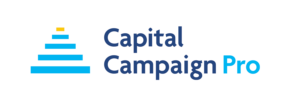How to Get Your Donor Database Ready for a Capital Campaign

A successful capital campaign takes extensive planning and preparation. While factors like the case for support and leadership gifts are critical, having clean, organized donor data is the essential foundation on which to build your campaign strategy.
Your donor database contains a wealth of information to help you identify and cultivate prospects. But data is only helpful if you take the time to update and maintain its accuracy.
Use these tips to get your donor database ready before launching your nonprofit’s next capital campaign.
Start by Cleaning Up Your Donor Database
Outdated or incorrect contact information, duplicate records, and other data issues will limit the usefulness of your donor database. Take the time to clean things up by:
- Performing an NCOA (National Change of Address) check to update any contacts who have moved.
- Running a deceased suppression against your list to remove contacts who are no longer living.
- Appending phone numbers and email addresses to enrich your data.
- Adding in missing birthdays or anniversaries to enable more personalized outreach.
- Merging duplicate records.
As you make any changes, have a staff member manually review the updates instead of just accepting all of them. This allows you to catch any errors and ensure your data integrity remains high.
There are many vendors who offer these services, such as TrueGivers. Some CRM products, like Bloomerang, also provide these services in-house. Be sure to first check with your existing provider!
Create SOPs for Ongoing Maintenance
Cleaning up your data once without a plan for keeping it clean will likely put you right back where you started in less time than you think. Establish standard operating procedures (SOPs) to keep information current moving forward.
First, determine who on your staff will be responsible for overseeing data accuracy. This is the ideal person to develop and document SOPs that can be shared with others to support this objective.
Your SOPs should include:
- Instructions for staff on how to record interactions and changes in the database.
- Guidelines for consistent formatting of recurring text, such as “Ln.” for Lane addresses.
- A requirement that new contact details or updates to existing ones be recorded right away after any donor interaction.
- Scheduled NCOA and deceased suppression checks every six months.
- Training for new employees.
- Note relationships between donors as they are discovered to enable household cultivation strategies (there may be “non-household” relationships that can be cultivated, such as employee-employer).
It’s best to make small ongoing data updates part of a regular protocol, rather than irregularly-occurring deep cleans once data has gotten dirty.
Consistent, minor maintenance saves you from having to start over each time you need donor data for campaigns or mailings. Documented SOPs will also protect your data from staff turnover and multiple CRM users.
If you’re not sure where to start, download this free Donor Management Software Data Policies and Procedures template from Bloomerang.
5 More Tips to Prepare Your Donor Database for a Capital Campaign
Here are five additional tips to help you fully prepare your donor database for capital campaign, so you can hit the ground running.
1. Conduct a Wealth Screening
One of the most useful analyses you can perform prior to a campaign is a wealth screening, which will help you identify top prospects. While it may be unrealistic to screen your entire database, try segmenting slices of your database for wealth screening, such as:
- Recent major gift donors
- Consistent annual donors
- Long-term retained donors
- Board members’ contacts
- Former board members
Wealth screenings provide giving capacity markers to segment and prioritize outreach to top prospects. Third-party screening services can append valuable wealth information to selected donor records.
2. Add Custom Fields to Your Donor Profiles for Capital Campaign-specific Information
Capital campaigns require a personalized approach. By building customized donor profiles, you can tailor your communications and engagement strategies based on individuals’ interests, motivations and preferences.
Start by identifying campaign-specific details you will want to track for campaign prospects. These may include:
- Pipeline stage
- Campaign ask amount
- Planned gift intention
- Connections to specific campaign projects
- Preferred salutation / name
- Meeting availability
- Acknowledgement preferences
Check with your CRM provider about the extent to which you can create custom fields if the field you want isn’t readily available. This may take some time and back and forth with your vendor, so don’t leave it until you’re in the middle of your campaign.
Additionally, donors aren’t the only constituent type for which custom fields may be appropriate. You can do something similar for campaign volunteers, such as noting specifically which campaign committee each volunteer sits on.
3. Analyze Donor Geography
If your capital campaign involves expanding programs or buildings into new territories, analyzing the geographic location of existing donors is key.
In other words, do you have donors who live in proximity to planned expansion sites? Might those donors be particularly receptive to supporting such expansion if it’s occurring in their “backyard”?
Produce a zip code breakdown of your donor database to see where concentrations exist.
4. Evaluate Top Donors
Your top donors (by giving amount) are critical capital campaign prospects. But look beyond just dollar amounts to assess these contacts. Ask yourself:
- Does your organization have real relationships and connections with them? If so, who holds that relationship? If not, how might a stronger relationship be built? Is further research needed to figure out a relational entry point?
- What contacts or experiences drove their previous gifts?
- Are they currently engaged and invested in your mission? How so?
Building rapport and trust with these individuals is essential to securing stretch gifts for campaigns. Taking a moment to understand where you have relational work to do will help you get to know your top donors better before you need to ask them for a campaign gift.
5. Identify “Hidden Gems”
Every nonprofit database contains hidden gems — loyal donors primed to become campaign champions. However, these folks often get overlooked because they don’t fit the “top donor” mold.
So, use your CRM to uncover prospects like:
- Donors who have given 5+ years consecutively
- Individuals who make multiple gifts throughout the year (including monthly donors)
- People who consistently support all appeals and campaigns
- Loyal volunteers (especially volunteers who also donate)
- People who have included you in their estate plans (if you track that information – you should!)
These donors demonstrate consistent commitment, despite not having the largest gift amounts. Such hidden gems can become vital campaign advocates with the right engagement!
Preparing Donor Data for Your Capital Campaign
Thoroughly combing through your donor data takes time upfront. But putting in the work positions your nonprofit for fundraising success when campaign time comes.
You can feel confident launching a capital campaign knowing you have clean contact information, relevant donor insights, and a priority prospect list based on sound CRM (constituent relationship management software) data. Remember, quality data is the bedrock on which to build a solid campaign strategy.
Take the necessary steps to get your donor database in order and you’ll have a key ingredient for capital campaign readiness. Now you can focus on bringing in those transformational gifts to advance your mission.
Find Out if You’re Ready for a Campaign
Download any of our four free assessment tools to help you determine whether you are truly campaign-ready.



Leave a Comment